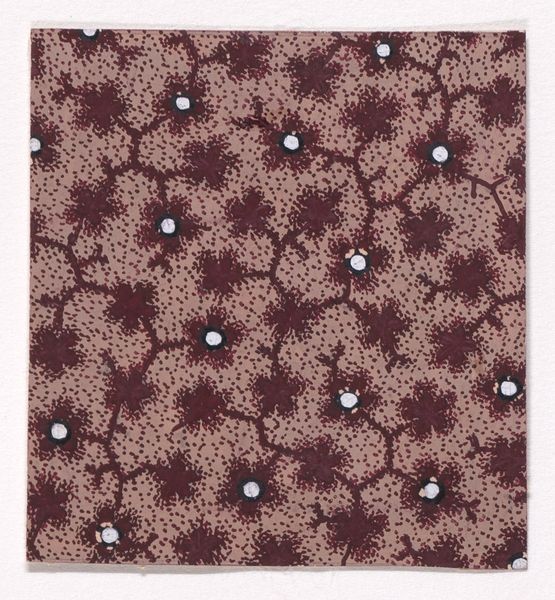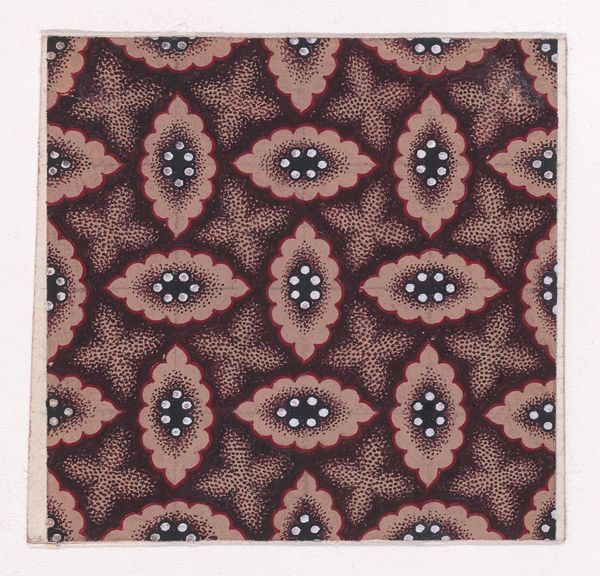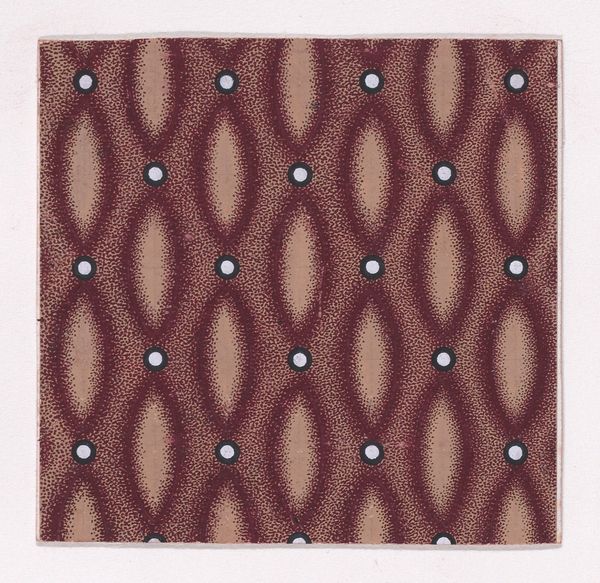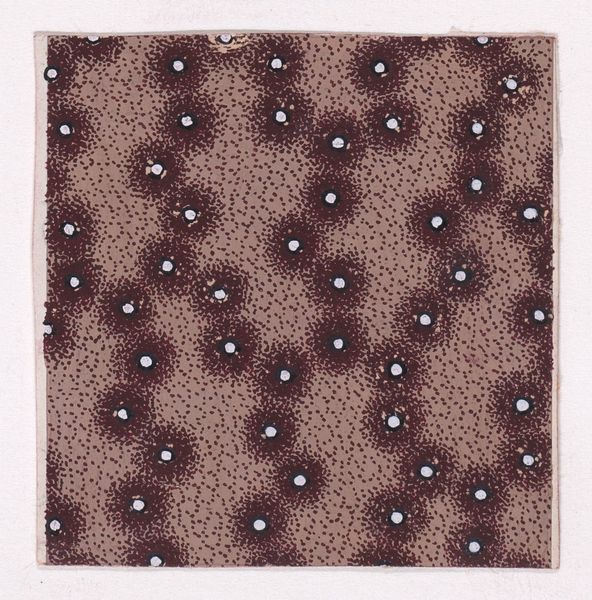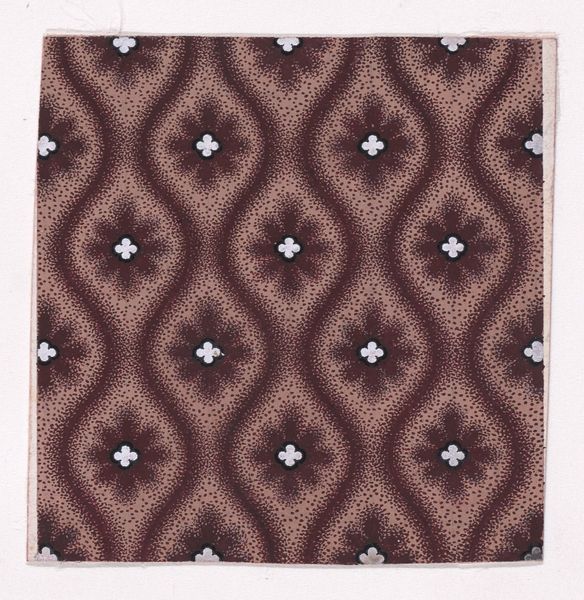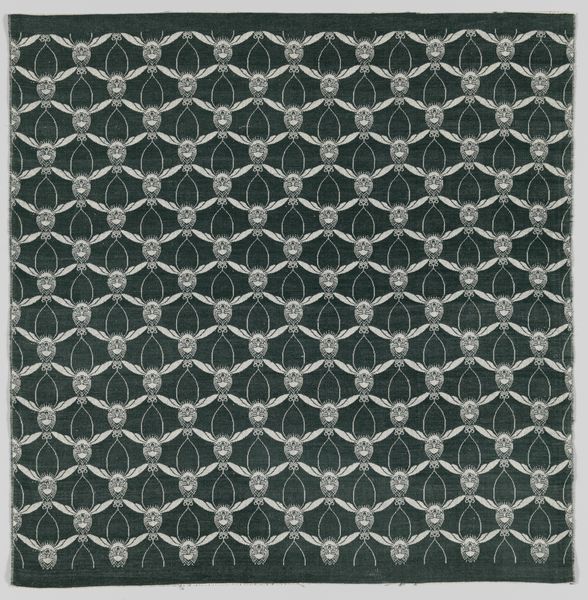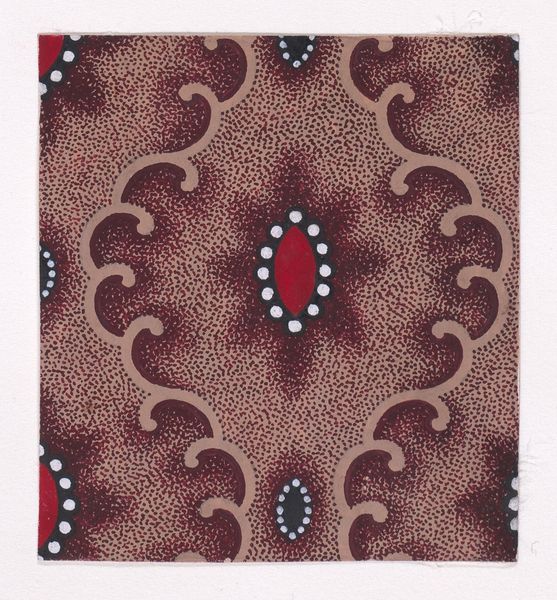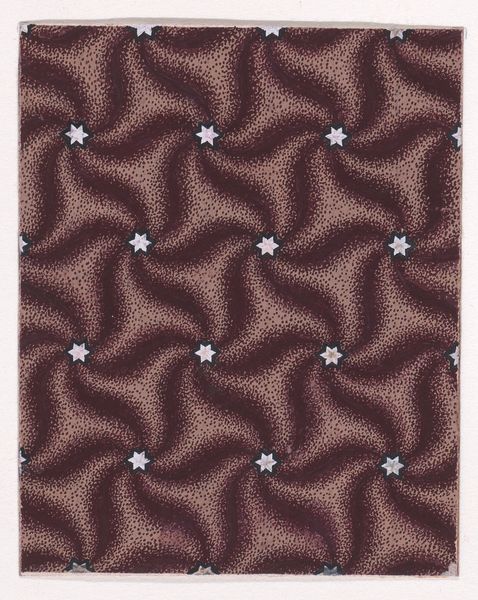
Textile Design of Alternating Rows of Pearls over an Abstract Background Simulating Tie-Dye 1840
0:00
0:00
drawing, print
#
drawing
#
natural stone pattern
#
naturalistic pattern
# print
#
geometric pattern
#
abstract pattern
#
organic pattern
#
flower pattern
#
repetition of pattern
#
pattern repetition
#
layered pattern
#
combined pattern
Dimensions: Sheet: 3 1/4 × 3 1/4 in. (8.2 × 8.2 cm)
Copyright: Public Domain
Editor: Here we have an anonymous textile design from 1840, entitled "Textile Design of Alternating Rows of Pearls over an Abstract Background Simulating Tie-Dye". It's a drawing or print. The repeating pattern is somewhat mesmerizing. How should we interpret a piece like this? Curator: The description highlights the key tension: high-end 'pearls' against the simulation of tie-dye, typically associated with more casual or even folk production. I think it’s essential to consider the context of textile production in the 1840s. This was a period of significant industrialization, especially in textile manufacturing. So, how does this design engage with these changes? Editor: Well, the 'pearls' are clearly representational, not actual pearls. So, it’s a design choice, accessible through mass production, right? Curator: Exactly! The print simulates luxury but through industrialized means. Think about the labor involved. Was this design intended for a specific class, or did the industrial processes make it accessible to a broader market? How does the tie-dye pattern play into notions of handcraft versus the machine-made? Editor: So, the meaning is really embedded in the production methods available at the time, and how they were used to create a specific aesthetic. I guess I was so focused on the visual aspects, I didn't think about the manufacturing process. Curator: Precisely. By understanding the means of production, distribution, and intended consumption, we reveal so much about the values and social dynamics embedded in this seemingly simple textile design. Editor: Thanks, I hadn't considered it in that light, I am seeing new possibilities now!
Comments
No comments
Be the first to comment and join the conversation on the ultimate creative platform.

